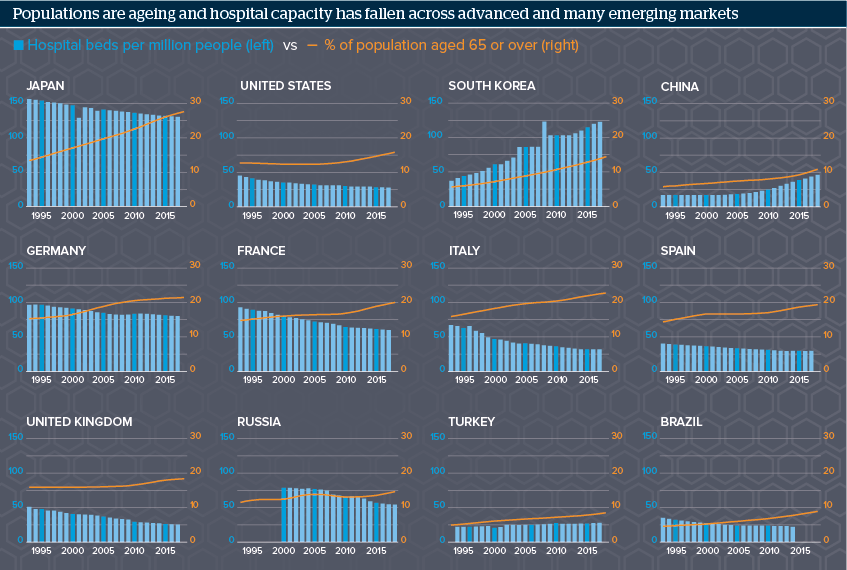Demography and past austerity raise the COVID-19 risks
COVID-19 particularly threatens the elderly; ageing populations and years of post-crisis austerity leave nations at risk
Source: World Bank World Development Indicators, Eurostat Regional Database
Outlook
Coronavirus cases are escalating even as public institutions, offices and hospitality venues close and travel curbs tighten. Populations are ageing in advanced and many emerging markets. Research by Imperial College estimates that 24% or more of COVID-19 sufferers over 70 require hospitalisation, compared to 3.2% of under 40s. The over 70s death rate is 5-10%. Fewer than 0.1% of under 40s die.
Years of post-financial-crisis austerity has stagnated or reduced countries’ healthcare capacity. Italy, the United Kingdom and the United States had twice as many hospital beds per capita 30 years ago. Population ageing will accelerate and lower 2020 GDP will reduce countries budget scope to prepare for future shocks.
Impacts
- Despite the extra social security efforts, the crisis will exacerbate economic inequalities; calls for more wealth taxation will grow.
- More under 55s are now being hospitalised for COVID-19, notably in the United States; this cohort’s hospital care and death rate may rise.
- Research gauges that no US region has enough beds, especially as just 5% are critical care beds, which over 5% of COVID-19 patients need.
- Some sectors may end up being effectively far more nationalised, eg, governments will aid manufacturers’ repurposing to make ventilators.
See also
- COVID-19 may overwhelm even advanced health systems - Mar 19, 2020
- The WHO’s COVID-19 pandemic declaration may be late - Mar 12, 2020
- More graphic analysis
